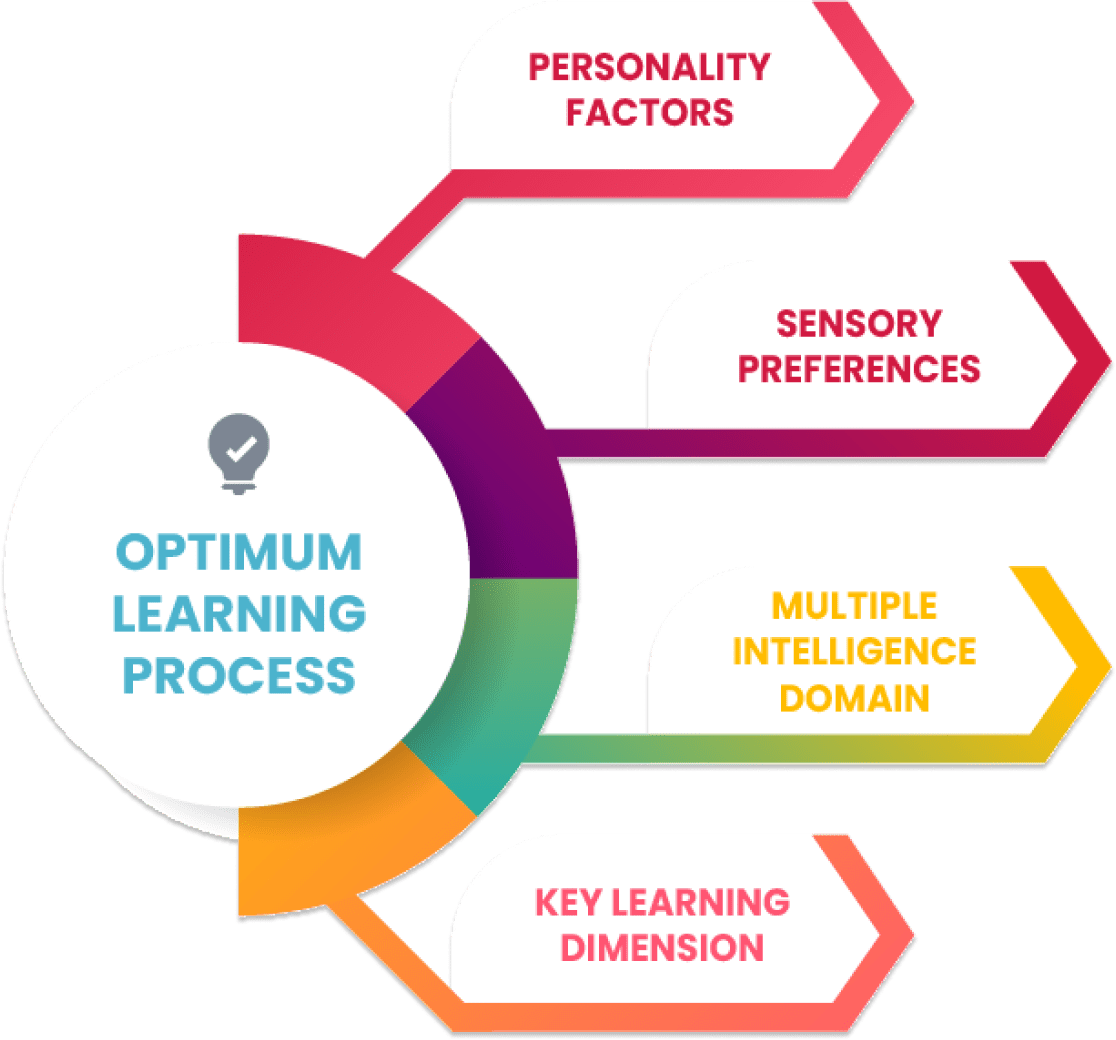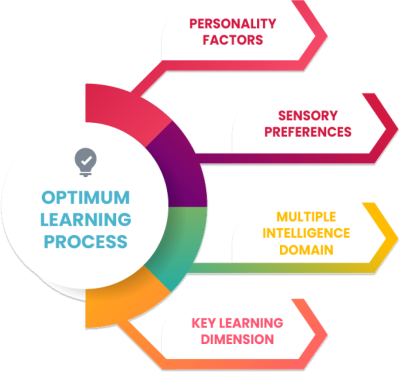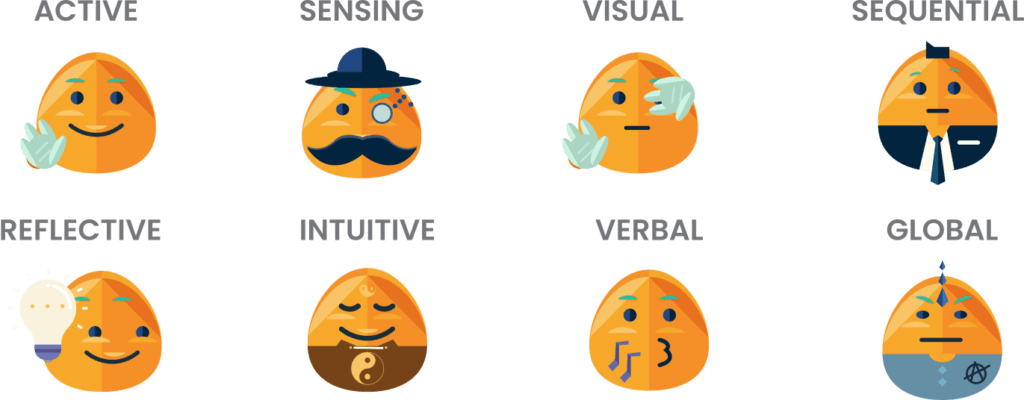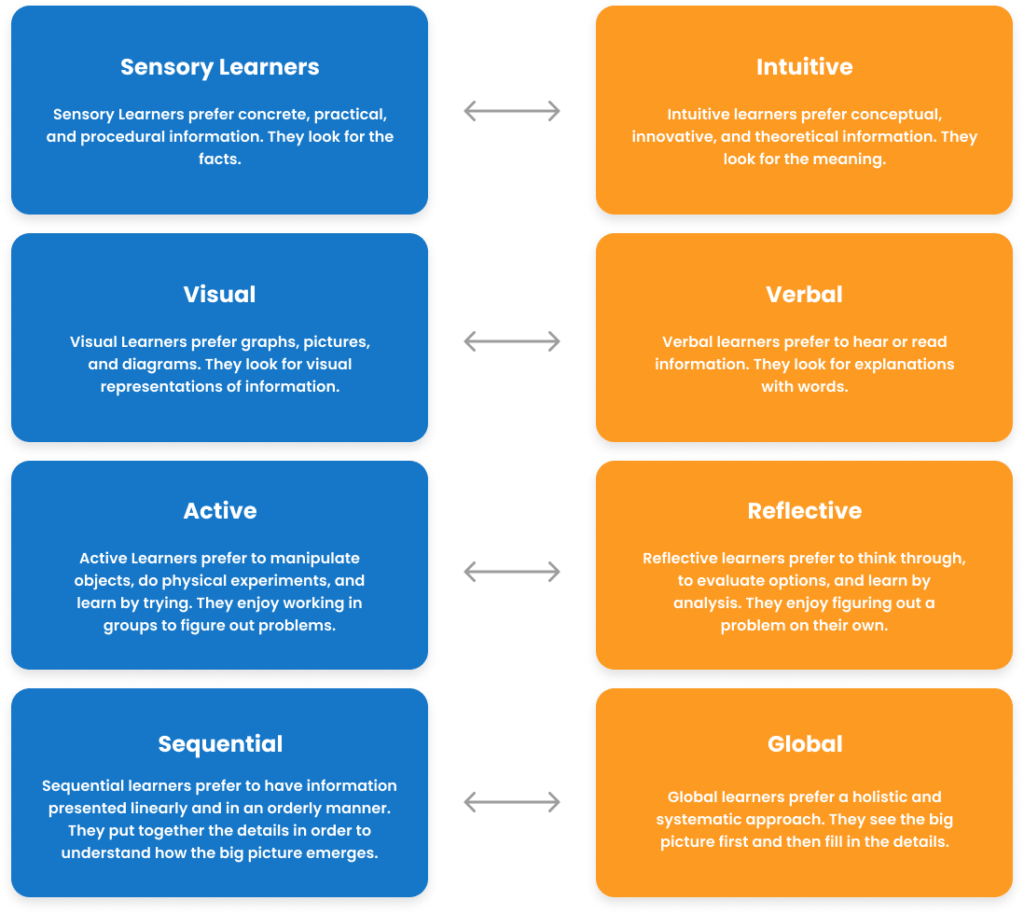GRIP Learning Profile™ was developed to help learners identify their preferred learning styles. We can define learning styles as preferences and tendencies students have for certain way of taking in and processing information and how they generally respond to different instructional formats and cognitive environments. GRIP Learning Profile™ is developed through extensive research on the underlying factors within us that influences our thinking and behaviours with regards to our learning. Different learning methodologies and psychological models were compared and evaluated extensively over the years to come out with our current version of a Learning Profile that includes all the major modalities that we deem as important influencing factors to a person’s learning preferences and abilities.
The Learning Profile Engine is built based on the following four pillars that we have identified that contributes significantly to our learning process. Each of the modalities have been widely researched and applied in many academic and professional scenarios to help people gain awareness into their learning styles and preferences. Customized and specific techniques can then be applied to drastically improve learning performance.












